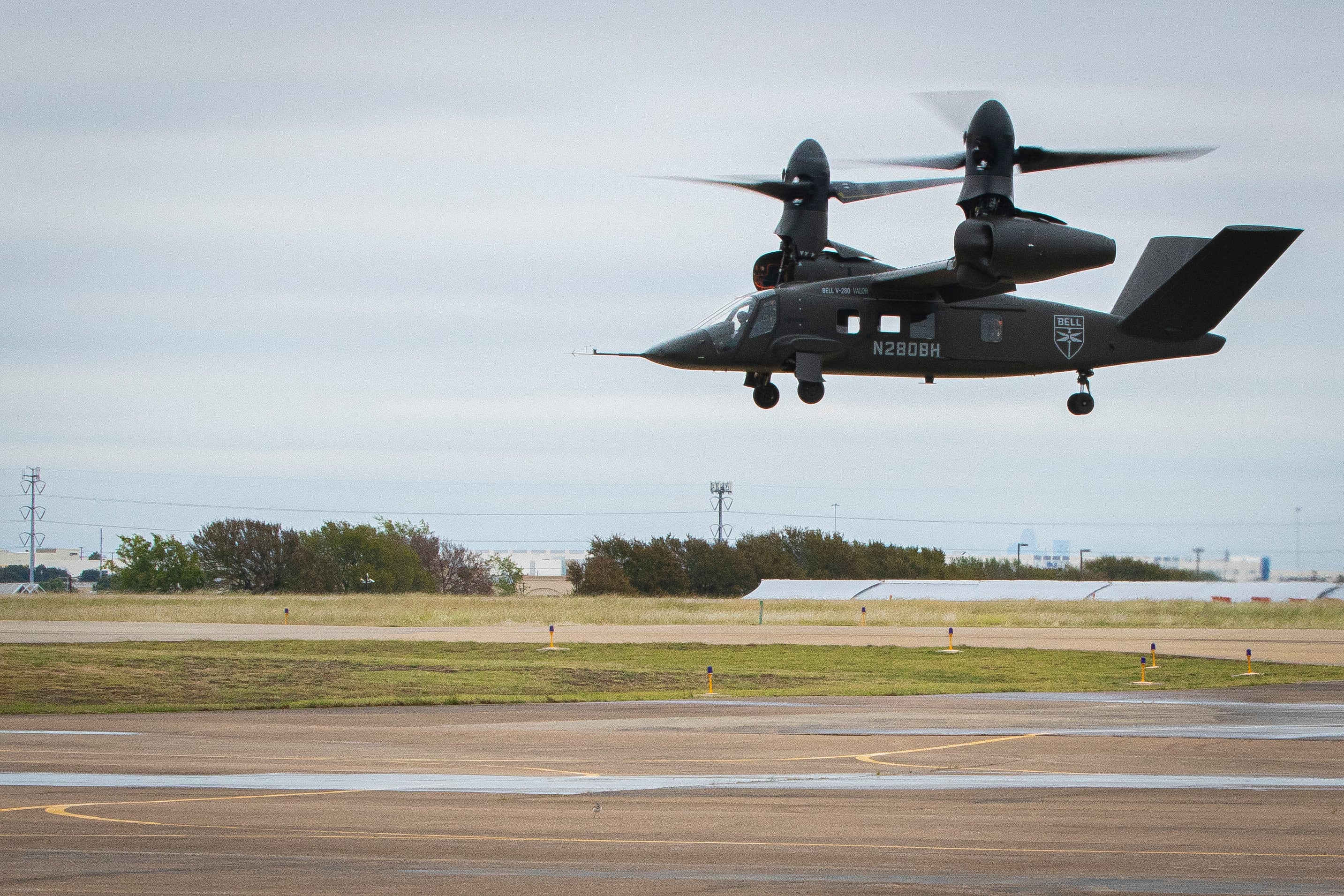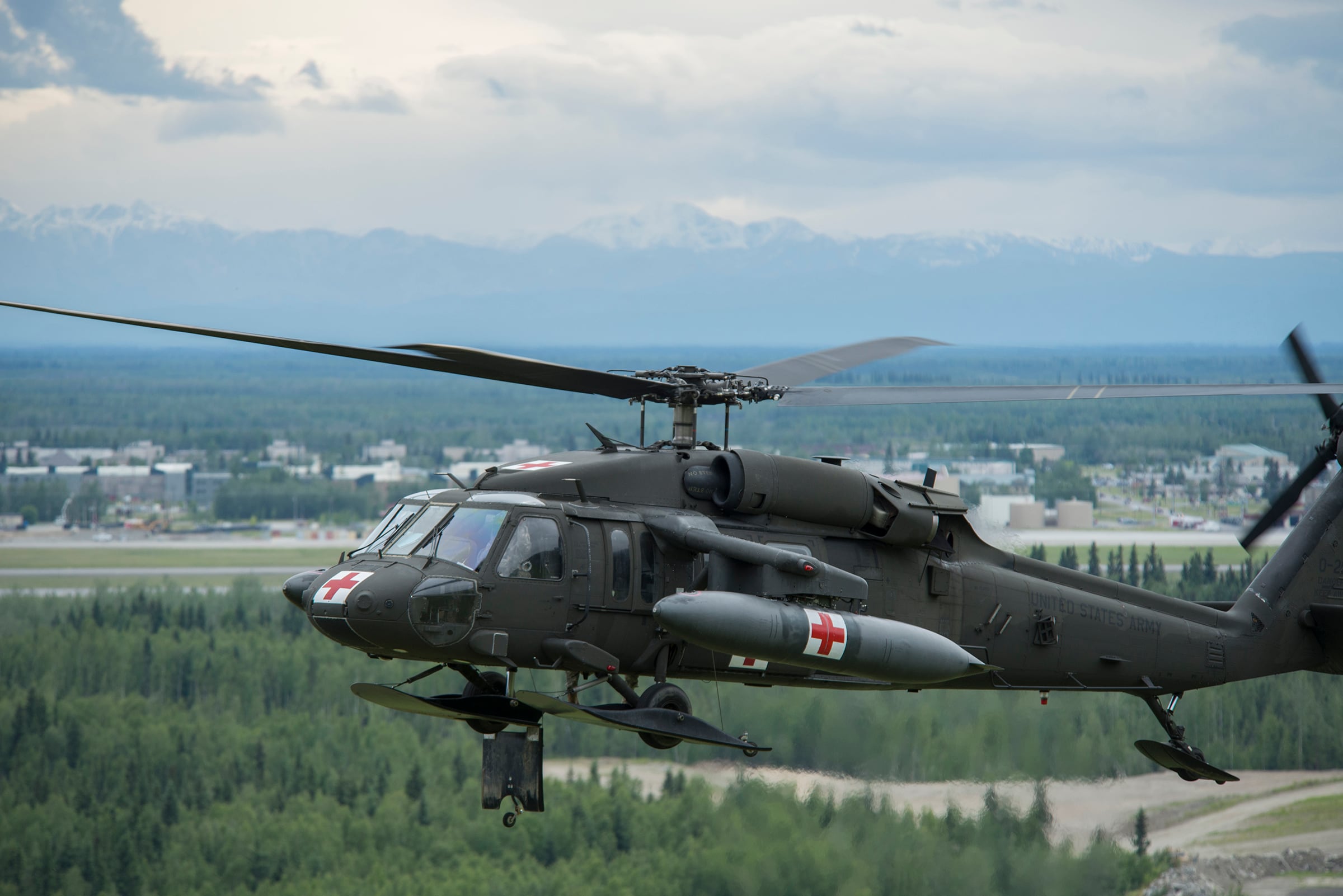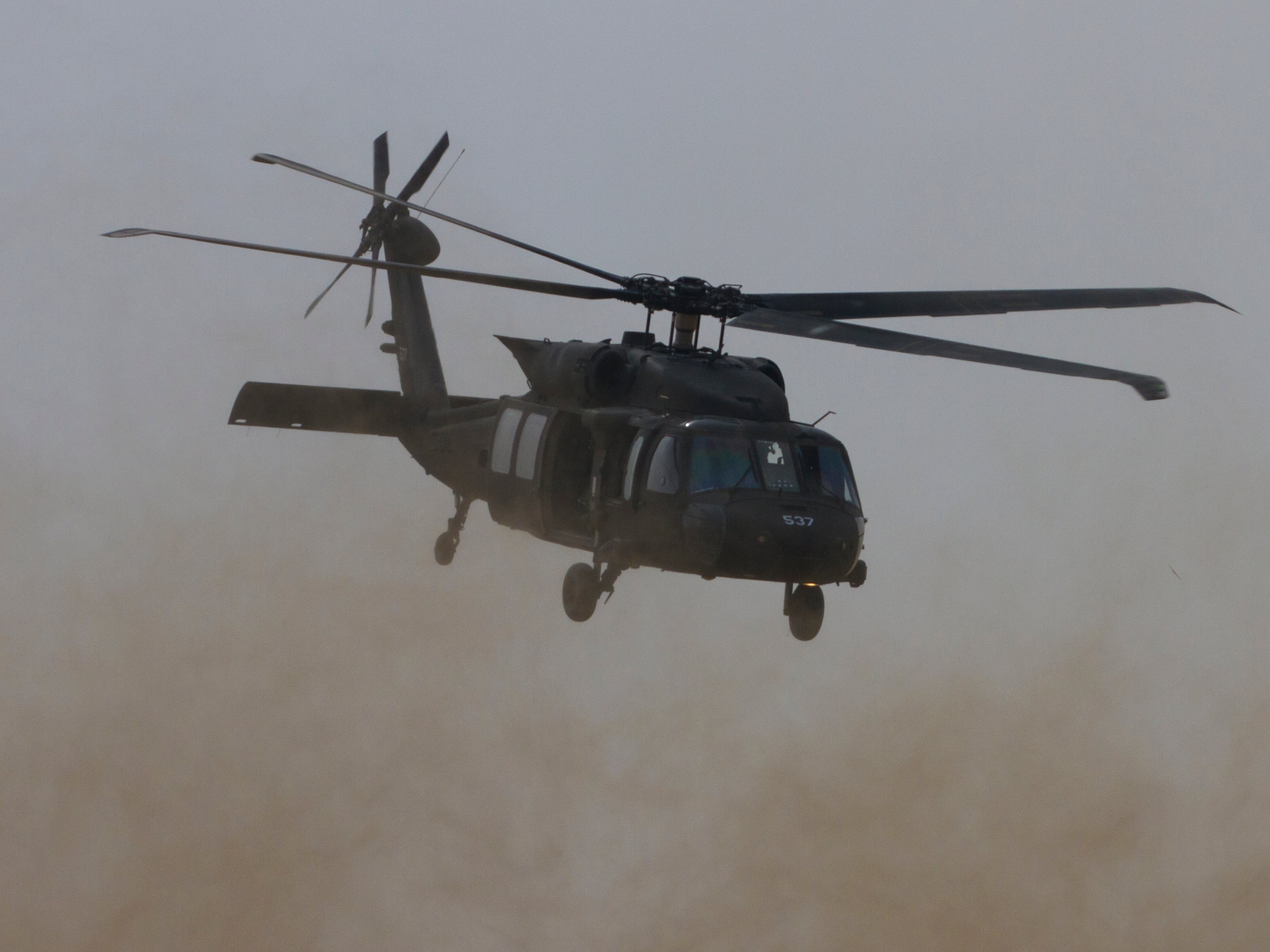Tom Drew knows his way around a helicopter or two — he’s qualified to fly nine current and former Army airframes. He pinned his pilot’s wings in 1983 as a warrant officer flying the AH-1 Cobra.
However, for the past three years or so, the two-star general has been on a human resources holiday, first with the service’s Talent Management Task Force and now as the leader of Human Resources Command. Despite his new assignment, Drew finds himself at the center of one of many controversies currently agitating the service’s aviators: a debate over pilot service obligations amplified by the revelation that nearly 200 flyers left the Army before their commitments were complete.
Spring 2023 presented further challenges for the Army’s aviation community: a spate of deadly accidents and personnel issues grabbed national headlines and ultimately led to a fleet-wide operations halt. In turn, current and former soldiers have found themselves asking: What is going on with Army aviation? Army Times spoke with the service’s top officers, and other senior officials in the branch, like Drew, who argued that the state of Army aviation is strong despite recent difficulties.
As evidence, they pointed to stable pilot retention and years-long reductions in accident rates, even including the recent crashes.
And beyond recent events, officials say they are excited about the Army’s progress on major modernization efforts. The Army recently selected Textron’s Bell to build its Future Long Range Assault Aircraft based on its V-280 Valor tiltrotor technology demonstrator. Leaders also said they believe recent safety stand down events will yield information that’ll help the service maintain its years-long trend of safer flying.
The Army is now working to adjust doctrine, training and force structure to integrate the tiltrotor aircraft when it hits hangars by the early 2030s.
“I see a very bright path for our aviators and those who work on aircraft,” declared Gen. James McConville, the service’s chief of staff and a pilot himself, in a phone interview with Army Times.
A community at a crossroads
Much like the rest of the Army, the aviation branch will evolve in the decade ahead as the service retools and reorganizes to compete with and, if necessary, fight against adversaries like China or Russia.
McConville said the service is at an “inflection point” and must transform after two decades of counterinsurgency and combating extremism.
The Army’s embrace of multi-domain operations as its guiding fighting concept will drive much of the shift — an October 2022 update to the service’s operations field manual laid the groundwork for how it plans to integrate space and cyber effects into the traditional air, land and sea domains of warfare. That triggered since-released or in-progress updates to nearly 370 other publications.
The Army’s helicopter force isn’t exempt, explained Maj. Gen. Mac McCurry, who leads the Aviation Center of Excellence at Fort Novosel, Alabama.
“We’re currently in the process of producing the next iteration of Army aviation operations [doctrine] that is in line with that,” he said.
And the demands of the future battlefield will require aviators to step their tactical game up after two decades of combating extremism around the world, even if that mission hasn’t entirely disappeared.
The branch is “acutely focused on sharpening tactical and technical skills for our young leaders,” McCurry said. Revamped or expanded training courses like the Advanced Warfighting Skills course for warrant officers or the Air Cavalry Leaders Course are “really getting deep” on understanding enemy systems and tactics, he added.
The general said officials are developing a new advanced tactics course intended to create advanced flyers who can mesh flying techniques with aerial small unit tactics and then go back to their units to train those methods with junior pilots. The other services have similar courses already, McCurry added, and the Army needs its own version “applicable to how we fight.”
But the biggest change looming for the Army’s aviators is technology-based. The Future Long Range Assault Aircraft, should Bell’s tiltrotor live up to expectations, is intended to gradually replace the UH-60 Black Hawk utility helicopter as the Army’s “do-it-all” workhorse — but with superior range and speed.
McConville said the new long-range aircraft will ease the complex refueling calculations that have bedeviled even “some of the recent operations that were run…with our special operators.” Prototypes for a next-generation attack helicopter, meant to replace the venerable AH-64 Apache by the early 2030s, are ready for testing as well once delayed next-generation engines are completed for them.

McCurry, the aviation chief, acknowledged that the new platforms will require changes to “doctrine, operations, leadership, personnel, facilities, policy” and more. But he’s optimistic that the service will find solutions by the time the helicopters hit the force.
Meanwhile, the Army is working with the defense industry to concoct upgrades to existing aircraft. Officials say the familiar Apache, Black Hawk and CH-47 Chinook cargo helicopter could all remain aloft into the 2060s.
Classic airframes sometimes have issues, though.
In 2018, the service paused deliveries of new Echo model Apaches from Boeing for a few months because of corrosion problems in the “strap pack” nut that indirectly held the rotor blades on the helicopter. Maintainers spent thousands of hours replacing the nuts across the fleet.
Then after Army depots took over engine parts ordering for the CH-47 Chinook in 2019, maintainers installed incorrect O-rings, leading to a series of engine fires. The entire fleet was grounded in August 2022 in order to install the correct parts.
But that isn’t the only grounding for the Army’s helicopters in the past year.
Saving a safety streak
McConville ordered an Army-wide safety stand down for early May after a series of helicopter crashes killed 14 soldiers and ended arguably the safest three-year period in the Army’s recent flying history.
RELATED

After more than two years without a fatal accidental helicopter crash, two Tennessee National Guard warrant officers died Feb. 15 when their Black Hawk went down near Huntsville, Alabama.
Then nine Army aviators died March 29 when a pair of Black Hawks collided and crashed during a night training event outside of Fort Campbell, Kentucky.
Three more were killed April 27 after their Apache attack helicopters collided while “redeploying” from a training exercise in Alaska, according to a preliminary Army report. One pilot survived.
While mourning the fallen aviators, Army officials told Army Times that fiscal 2023 remains one of the safest years on record in terms of total “Class A mishaps,” or accidents that lead to the loss of an aircraft or a crewmember.
An official from the Combat Readiness Center, which investigates all such incidents, noted that fiscal 2010 saw 23 Class A aviation mishaps, adding, “We have driven these numbers down to where now one or two mishaps is significant.”
The chief of staff emphasized the risk inherent to even training flights.

“Aviation is always at combat, whether an enemy is firing bullets at you or not, because you’re always fighting gravity,” McConville said.
The safety stand down, McConville said, was intended to reset the Army’s flight units and look for ways to prevent any further accidents. It was the first such move since 2015, when Army Forces Command grounded all aircraft in the wake of three deadly crashes that killed eight aviators over a ten-day span.
When the recent pause was ordered, an Army official told Army Times that accompanying mandatory training events would require the participation of installation commanders. The training, which concluded by May 5 for active duty troops and May 31 for the Guard and Reserve, covered multi-ship operations safety, mission planning, risk assessment, maintenance programs, aircrew training and more.
Another key aspect of the stand down, the official said, was inviting junior troops in aviation units to speak up and “inform aviation unit leaders on unit-specific actions” they can take to improve safety practices.
McCurry, who serves as the commander of Fort Novosel in addition to his role leading the aviation schoolhouse, led his post’s stand down event.
Although he noted that the service is still compiling the force-wide findings from the event, he said that the Novosel stand down emphasized the need for regular training meetings within aviation units. McCurry highlighted them as a recurring setting where experienced troops like instructor pilots and maintenance platoon sergeants need to offer “bottom-up feedback” to leadership in order to refine mission plans.
The stand down’s compiled findings were not complete and available for Army Times’ review ahead of this article’s publication deadline.
Whatever it finds, McCurry and other Army officials say they are confident that the service’s top leaders are prepared to address them appropriately.
Pending personnel pitfall
Even as the service projects confidence over its modernization and safety improvement efforts, a personnel issue is fueling dissatisfaction among mid-career pilots.
Army Times previously reported how the service’s Human Resources Command, led by Drew, informed more than 600 commissioned officer aviators that their service contracts are up to three years longer than previously thought. The notifications began in mid-April.
In interviews and statements made to members of Congress obtained by Army Times, impacted aviators were confused about “branch of choice active duty service obligation” contracts that they had accepted in return for becoming pilots. Many believed their additional three years would be served simultaneously with their flight school training obligations. Adding to the chaos, aviation commitments are handled differently than those for any other officer career field.
Officers who entered active duty between 2008 and 2020 were able to commit to the contracts while they were West Point or ROTC cadets pining to become pilots, though it wasn’t guaranteed whether the Army would apply the contract when selecting them.
After top graduates from West Point received their first choice career fields, the lower-ranking grads were prioritized and sorted based on their willingness to accept an extra three years in uniform. For highly-competitive fields like aviation, a smaller proportion of ROTC-commissioned lieutenants received their top choice without incurring the extra time.
Although the contracts state that aviators’ additional three years were to come after the end of their flight school obligation, which is enforced by federal law, briefing materials and messages from Human Resources Command officials distributed to pilots throughout their careers contradicted the contract’s language.
It’s not clear when the misunderstandings began, but the Army realized the error in the fall of 2022 when pilots who entered active duty in 2015 began submitting resignations when they believed their service obligations to be complete.
Human Resources Command audited resignations from previous year groups and realized that 195 aviation officers had voluntarily departed the Army before their branch of choice obligation should have been complete, according to Drew and briefing materials prepared for members of Congress obtained by Army Times.
RELATED

Four pilots told Army Times that officials instructing them on branch applications told them the three-year branch of choice commitment would run simultaneously with their flight school obligation if it was accepted. Others, in their letter to Congress, claimed that the Army failed to alert them that their branch of choice commitment had been applied and that the service also did not upload the executed contracts to their personnel files.
Drew and McConville both acknowledged that the Army failed to properly communicate the contract’s terms with pilots throughout their careers. They also said the Army could have done a better job of contacting impacted pilots.
“I did a poor job last fall in communicating this to the Army and to these individuals, which created some of the…buzz that you’ve seen surrounding the [commitments],” said Drew. “We didn’t really have an accurate accounting [then, but] I think we are very accurate in our audit now.”
McConville, the service’s top officer, said, “We should have made sure that there was a clear understanding of the additional service obligation for their branch.”

However, the leaders stopped short of committing to a blanket waiver of all remaining branch of choice obligations, despite the years-long systemic failures in tracking and communicating them.
“I’m not going to disadvantage some officer who raised their hand to serve in an Army at war [who] got told one thing by us, HRC, for years that, ‘No, it’s concurrent, don’t worry about it,’” Drew committed. “That’s what we communicated to those [officers], and because we did that, I am taking every one of these cases. And if they truly didn’t know that, I’m approving their [exception to policy],” to leave the Army when they thought they could do so.
The chief of staff expressed concern about officers highly ranked in ROTC who didn’t know they’d had an additional three years applied, adding that “the intent is to honor the agreement we made.”
“We have to take a look at each individual case,” he noted.
Yet when asked by Army Times whether the communication failures warranted service-wide action, McConville demurred and expressed skepticism that the pilots didn’t understand that their branch of choice obligation was intended to be served after their flight school obligation rather than simultaneously when signing their contracts as cadets.
“Take a step back [and imagine] you’re a cadet at West Point or ROTC, and you want to go aviation but you don’t qualify based on where you stand in the order of merit list,” McConville posited. “So you say you’ll take an additional service obligation to go into that branch…if you could take a [branch of choice] and it was concurrent, then why wouldn’t everyone do that?”
Impacted pilots reached by Army Times said that was their exact thought process: the officials explaining the contracts to them said they would be served concurrently to their flight school commitment, so they believed that signing the branch of choice obligation would only in effect add a few months or a year. For some non-scholarship cadets with shorter commissioning obligations, they believed their branch of choice commitment could potentially have no impact at all.
McConville said he has “complete trust and faith in” Drew to make the right calls on a case-by-case basis.
And despite — or perhaps in a sense because of — the commitment confusion, Drew said that mid-career pilot retention remains on par with historical levels in contrast to the endemic pilot shortages that afflict the other services.
“I’ve not seen some significant jump in attrition at those critical [mid-career] ranks,” he added. Over his more than 40 years as an Army aviator, the general noted, he’s “seen the ebbs and flows” of manning levels.
Drew cautioned, though, that the Blended Retirement System, which allows personnel to leave the military before retirement and still retain government-matched contributions in their individual retirement accounts, could potentially harm retention over the long haul. And manning the future aviation force will require plenty of experienced pilots.
“I currently don’t see a problem,” said the career aviator. “That doesn’t mean there aren’t storm clouds on the horizon.”
Despite his worries, Drew described the impending modernization era as an “exciting” one.
“I’m way too old to hang around,” he chuckled. “But if I was a young aviation soldier or pilot — there’s a bright future.”
Defense News land reporter Jen Judson contributed to this report.
Davis Winkie covers the Army for Military Times. He studied history at Vanderbilt and UNC-Chapel Hill, and served five years in the Army Guard. His investigations earned the Society of Professional Journalists' 2023 Sunshine Award and consecutive Military Reporters and Editors honors, among others. Davis was also a 2022 Livingston Awards finalist.





